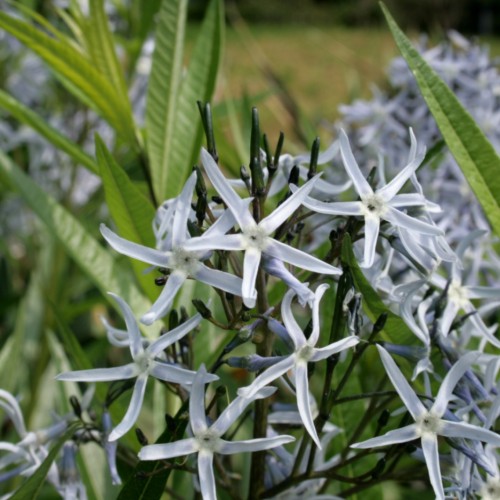
blue star
Amsonia 'Seaford Skies'
Cycle:
Herbaceous Perennial
Watering:
Average
Hardiness Zone:
5 - 9
Flowers:
Flowers In Spring
Sun:
full sun,part shade
Leaf:
Yes
Growth Rate:
Low
Maintenance:
Low
Drought Tolerant:
Yes
Salt Tolerant:
Yes
Care Level:
Medium
watering
Blue Star plants (Amsonia 'Seaford Skies') need to be watered regularly to help them maintain a healthy root system and grow. Water the plant deeply once a week, applying enough water so that it reaches 2–3 inches below the surface of the soil. Allow the soil to dry slightly between waterings, about 1–2 inches down. During summer months, you may need to water it more often – as many as 1–2 times per week depending upon the weather and position of the plant. In winter, reduce the frequency of waterings to every other week. If you’re growing Blue Star outside, you may need to water it more during hot, dry spells.
sunlight
Blue Star (Amsonia 'Seaford Skies') is a deciduous perennial plant that loves full sun for best growth. It prefers to receive at least 6 to 8 hours of direct sunlight per day, preferably around noon.
pruning
Blue Star (Amsonia 'Seaford Skies') should be pruned in early spring, before new growth emerges and the flowering period begins. Dead or damaged branches should be removed at this time to promote vigorous growth and reduce the chances of pathogens or insect infestations. To maintain a compact size, the plant can be lightly sheared back, removing up to 1/3 of the top of the stem. If the plant becomes overcrowded or leggy, the stems can be cut back to encourage branching and a more even shape. Allow the plant to flower and set seed in the fall, and prune no later than this time to ensure healthy growth for the following growing season.
